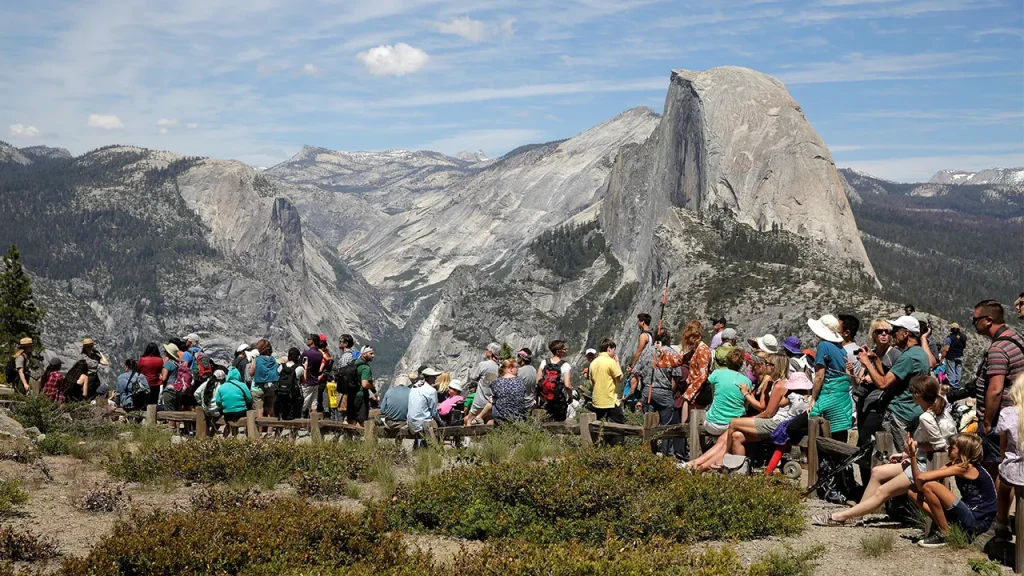Yosemite Faces Growing Disorder as Shutdown Stretches Ranger Resources Thin
As the federal government shutdown drags on, Yosemite National Park is experiencing a troubling rise in rule violations and unauthorized activities. Park employees report that with minimal ranger presence, visitors are increasingly taking advantage of the reduced oversight. “There are lots of squatters in the campgrounds,” one employee told SFGATE. “There are lots of people that truly believe they can do whatever they want because of the lack of rangers. They’ve told us.” This sentiment reflects a growing concern about how the absence of proper staffing is affecting one of America’s most treasured natural landscapes. Currently, the employee noted that only a single wilderness ranger—technically a volunteer rather than a National Park Service (NPS) employee—is responsible for patrolling the entire park, creating an enforcement vacuum that some visitors are eagerly exploiting.
The Department of the Interior has acknowledged they’re “aware of reports” of escalating violations, particularly illegal BASE jumping, and assured the public they are investigating these incidents. Despite the shutdown, they emphasized that “the National Park Service will continue to keep parks as accessible as possible” while maintaining that “critical functions that protect life, property and public health will remain in place.” The department insists that law enforcement officers remain on duty and will respond to violations, trespassing, or resource damage. However, the reality on the ground suggests that these limited personnel are stretched extremely thin, creating gaps in enforcement that adventure-seekers and rule-breakers are quick to identify and exploit.
Evidence of these violations has been spreading across social media, with videos and photographs documenting BASE jumpers leaping from El Capitan, unauthorized campers occupying closed campgrounds, and climbers scaling Half Dome’s cables without the required permits. While BASE jumping—an acronym for Building, Antenna, Span, and Earth—has been prohibited in national parks since the 1980s, enthusiasts have historically attempted to practice their sport secretly at dawn or dusk to avoid detection. Now, with minimal ranger presence, jumpers are becoming increasingly bold. Charles Winstead, who witnessed approximately a dozen illegal jumps in the park last week, told the San Francisco Chronicle, “You hear them before you see them. Then the parachute pops and there’s no more noise.” His Instagram video captured one such jump with the telling caption: “More base jumpers! Definitely feeling some freedom to flout the rules due to the shut down. Second group today.”
Conservation advocates warn that these incidents represent a concerning pattern that tends to emerge whenever national parks operate without adequate staffing. During the 2018-2019 government shutdown, Yosemite and other national parks suffered extensive vandalism, illegal off-roading, and waste accumulation that required months of restoration work. Emily Thompson, executive director of the Coalition to Protect America’s National Parks, expressed her frustration: “This is exactly what we warned about. And this is why national parks need to be closed until the government re-opens. This shutdown is making an already bad situation at national parks and public lands far worse.” The coalition, composed of over 40 former NPS leaders, had previously urged Interior Secretary Doug Burgum to close all 433 national park sites if government funding lapsed, arguing that “leaving national parks open without National Park staff to help protect visitors and resources is not only irresponsible—it’s dangerous.”
The current situation is exacerbated by ongoing staffing challenges that preceded the shutdown. According to the National Parks Conservation Association, nearly 25% of the Park Service’s permanent staff has been lost since January, leaving many parks, including Yosemite, without sufficient personnel to ensure visitor safety or respond promptly to emergencies. This staffing deficit creates a perfect storm when combined with a government shutdown, as the already thin ranger presence is reduced to skeletal levels. The Department of the Interior’s September 2025 contingency plan states that during a funding lapse, essential functions such as law enforcement and emergency response will continue, and most park areas “will generally remain accessible” with limited services. However, the reality of implementing this plan with significantly reduced personnel presents considerable challenges.
Despite these concerning developments, Interior Secretary Burgum has maintained that national parks “remain open and accessible,” emphasizing a commitment to ensure “all Americans have the opportunity to visit and enjoy our Nation’s most treasured places.” This approach reflects the difficult balance officials must strike between maintaining public access to natural spaces and ensuring proper protection of both visitors and resources. As the shutdown continues, park advocates worry that more serious incidents could occur, ranging from environmental damage to visitor injuries in remote areas where emergency response might be delayed. The situation at Yosemite serves as a microcosm of the broader impacts of government shutdowns on public lands—highlighting how budget disputes in Washington can translate into real consequences for America’s natural heritage and the millions who visit these spaces each year. Without a resolution to the funding impasse, these precious landscapes remain vulnerable to those who see the absence of rangers not as a concerning gap in protection, but as an opportunity to break rules without consequences.


